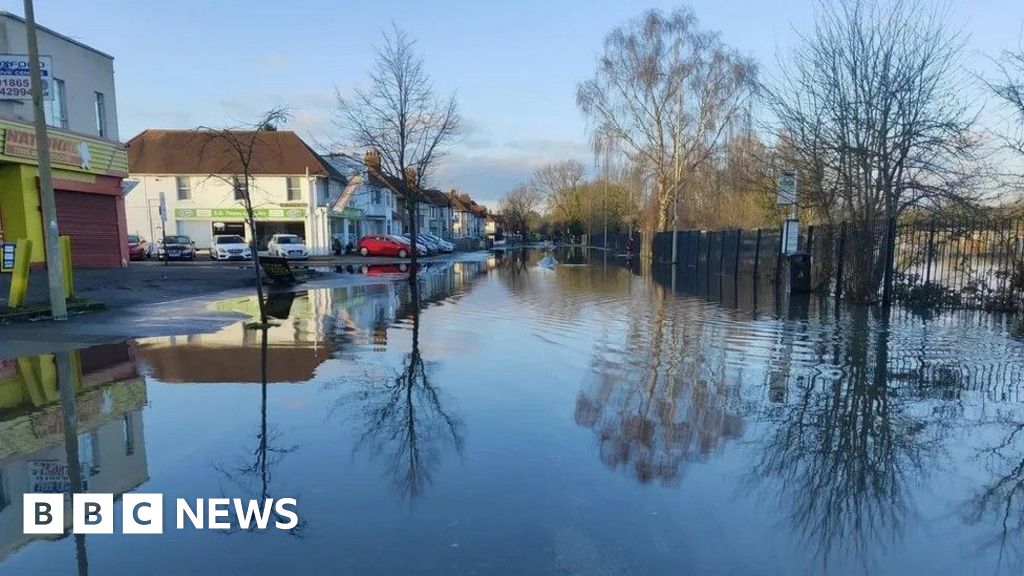
 Oxford City Council
Oxford City CouncilPlans for a £176m project to reduce flood risks in Oxford have been approved by a council.
The Oxford Flood Alleviation Scheme would create a route for floodwater between the Botley Road in Oxford and Kennington.
Oxfordshire County Council’s planning and regulation committee gave planning permission for the scheme at a meeting earlier.
But it still has to be referred to Angela Rayner, the Secretary of State for Housing, Communities and Local Government, due to its potential impact on the Green Belt.
The Environment Agency (EA) must also sign up to a legal agreement with the council to manage and monitor the new habitats created by the project.
The EA believes the scheme is “much-needed” and will help deliver “substantial benefits for residents, businesses and the reputation of Oxford”.
Oxford has previously experienced significant flooding, with Storm Henk causing severe damage to homes and businesses at the start of this year.
The city also experienced significant flooding in 2007, 2012, 2013, and 2014.
The scheme, which would be one of the biggest in the country, would involve creating a new stream through the existing floodplain to the west of Oxford, diverting floodwater away from built-up areas.
The 5km-stream (3 miles) would begin north of Botley Road and end south of the A423 near Kennington, where it would join the River Thames.
 EA
EAProject director Robbie Williams said the council’s recommendation marked “significant progress” in an “ambition to better protect Oxford residents and businesses”.
Pete Sudbury, deputy leader of the county council, said it would provide Oxford with “vital protection from flooding and help the city to become more resilient to the effects of climate change”.
He said the authority would work with the EA to “secure the swift delivery” of the scheme.
Nigel Chapman, cabinet member for citizen focused services at Oxford City Council, said it would ensure “peace of mind for our city as we face wetter winters”.
Bethia Thomas, leader of Vale of White Horse District Council, said it was “welcome news” for communities at regular risk of flooding.
And Simon Collings, from the Oxford Flood Alliance, said it was the “best option for Oxford, its communities, its economy and biodiversity”.
But Patricia Murphy, from the Oxford Flood Environment Group, said: “Specific failures include adequately considering alternatives and evidence to the 5km channel through the Oxford Green Belt.”
She called the proposals “unnecessarily destructive and costly, and of minimal benefit”.
About 30 members of the public attended the meeting to share their views about the proposal.
Eight councillors voted in favour of the plans, with one abstaining.
The EA is also waiting to see if it can continue with a Compulsory Purchase Order (CPO) in order to implement the scheme.
A CPO enables authorities to acquire land from a landowner to develop infrastructure projects in the public interest.
